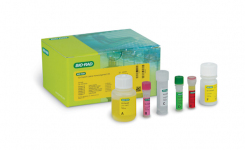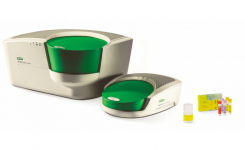Campylobacter is a bacterium that can cause an illness called campylobacteriosis in humans. With over 190,000 human cases annually, this disease is the most frequently reported foodborne illness in the European Union (EU). However, the actual number of cases is believed to be around nine million each year. The cost of campylobacteriosis to public health systems and to lost productivity in the EU is estimated by EFSA to be around EUR 2.4 billion a year.
To protect consumers from this public health threat, the EU has adopted an integrated approach to food safety from farm to fork.
Raw poultry meat is often contaminated with Campylobacter since the bacterium can live in the intestines of healthy birds. It is also found in pigs and cattle. Eating undercooked chicken, or ready-to-eat foods that have been in contact with raw chicken is the most common source of infection.
Considering all this, a European commission regulation has been recently adopted to include the food category "Carcasses of broilers" for the control of Campylobacter using the analytical reference method (EN ISO 10272-2). The regulation recommends application of International Standard EN ISO 10272-2, which defines the horizontal method for enumeration of Campylobacter in food and feedstuffs as a reference method for verifying compliance with the criterion for Campylobacter in poultry carcasses for the official laboratories. Regulation allows also using alternative method ISO 16140 validated.
ISO 10272 indicates the use of a charcoal-based selective media and a blood-containing media. These culture plates are incubated for up to 72 hr and their lack of selectivity allows for the growth of large amounts of competing flora. In order to help customers, Bio-Rad has developed a specific chromogenic media to easily enumerate Campylobacter.
RAPID'Campylobacter agar is a selective chromogenic media for the detection and enumeration of the main species of thermophilic Campylobacter (C. jejuni, C. coli, and C. lari) in food products and environmental samples. The use of a selected nutritive mixture associated with reducing agents allows the growth of Campylobacter spp. in an optimal time (24-48 hr). After incubation, the plates can be stored refrigerated (2-8°C) for 72 hr in a microaerophilic atmosphere before reading. Other bacterial species, as well as yeast and molds, are inhibited by the selective agents. Campylobacter produces brick-red colonies on RAPID’Campylobacter. A confirmation method has also been developed after 24 hr with PCR or after 48 hr with a latex test.
Easy to read with a high selectivity and sensitivity allowing a fast time to results, RAPID’Campylobacter agar is now available in dehydrated and pre-poured format for better laboratory organization.
The RAPID'Campylobacter method for enumeration is validated according to the EN ISO 16140-2 protocol and the AFNOR technical rules under the certificate number 07/25 - 01/14. During a study performed by the University of Ghent in 2014 to compare different media, results clearly indicated that RAPID'Campylobacter is highly selective without loss of sensitivity for recovering Campylobacter. Results obtained are in agreement with those for other commonly used media; therefore, RAPID'Campylobacter is suitable for Campylobacter enumeration in poultry meat samples.

























